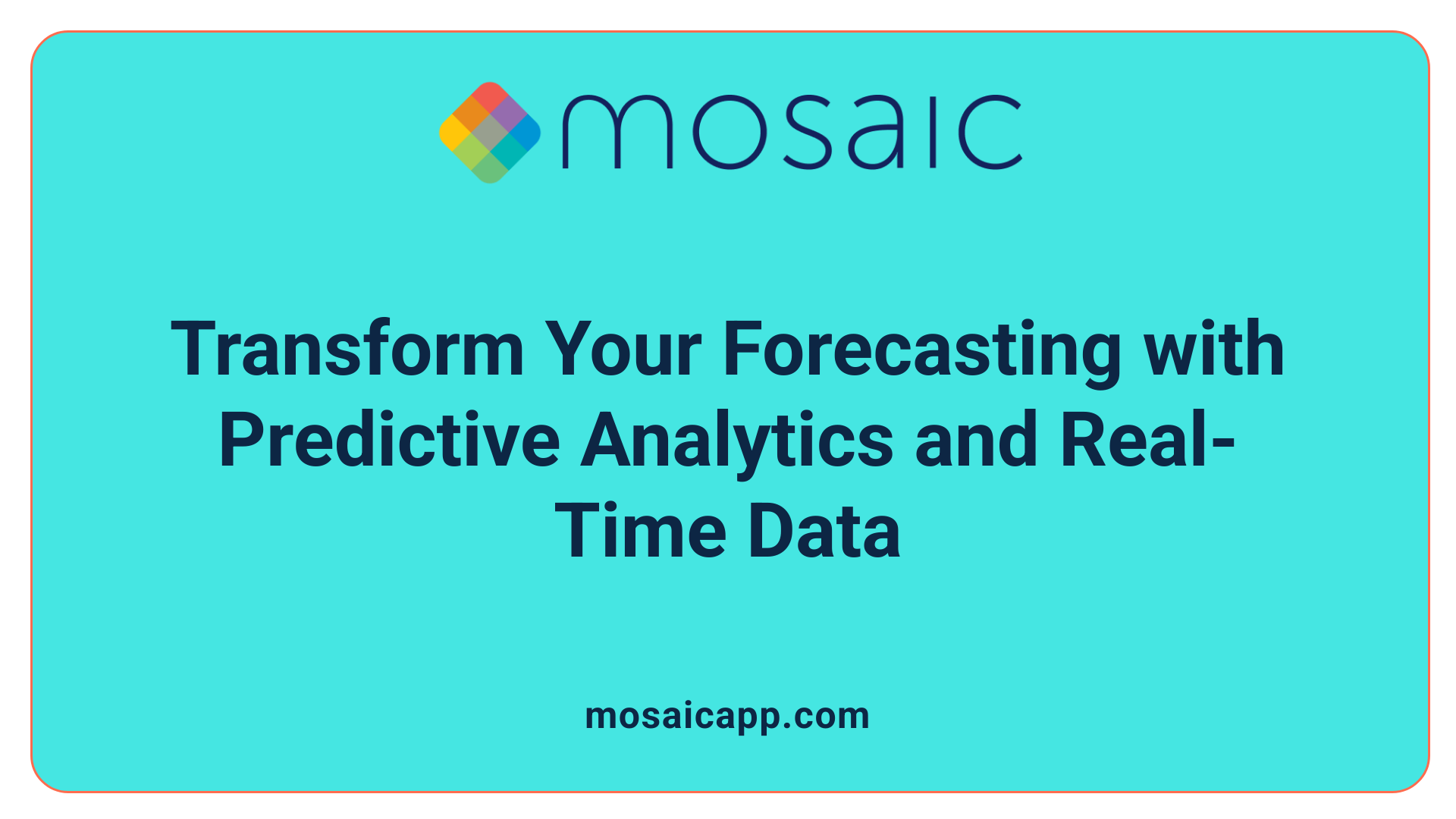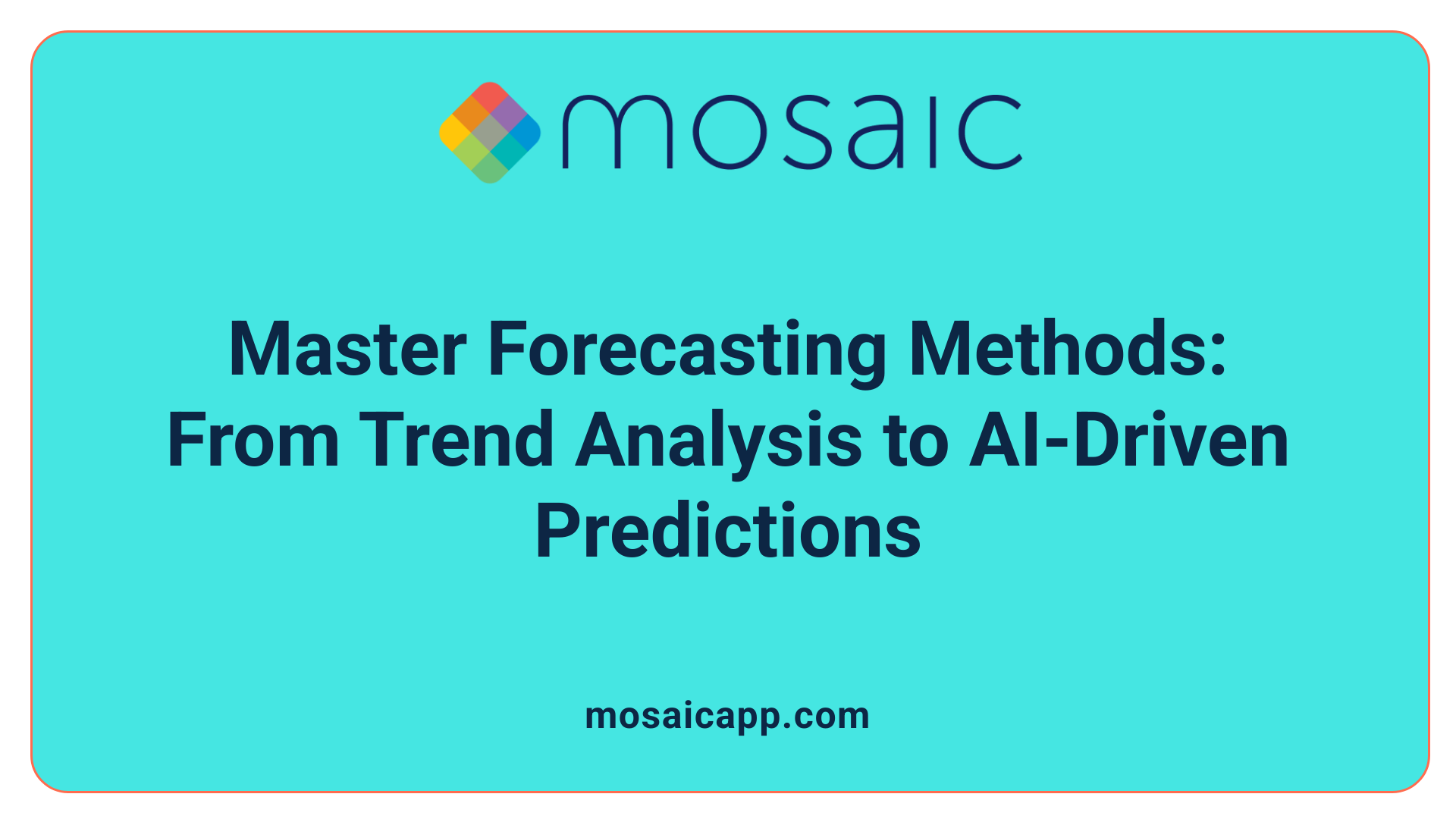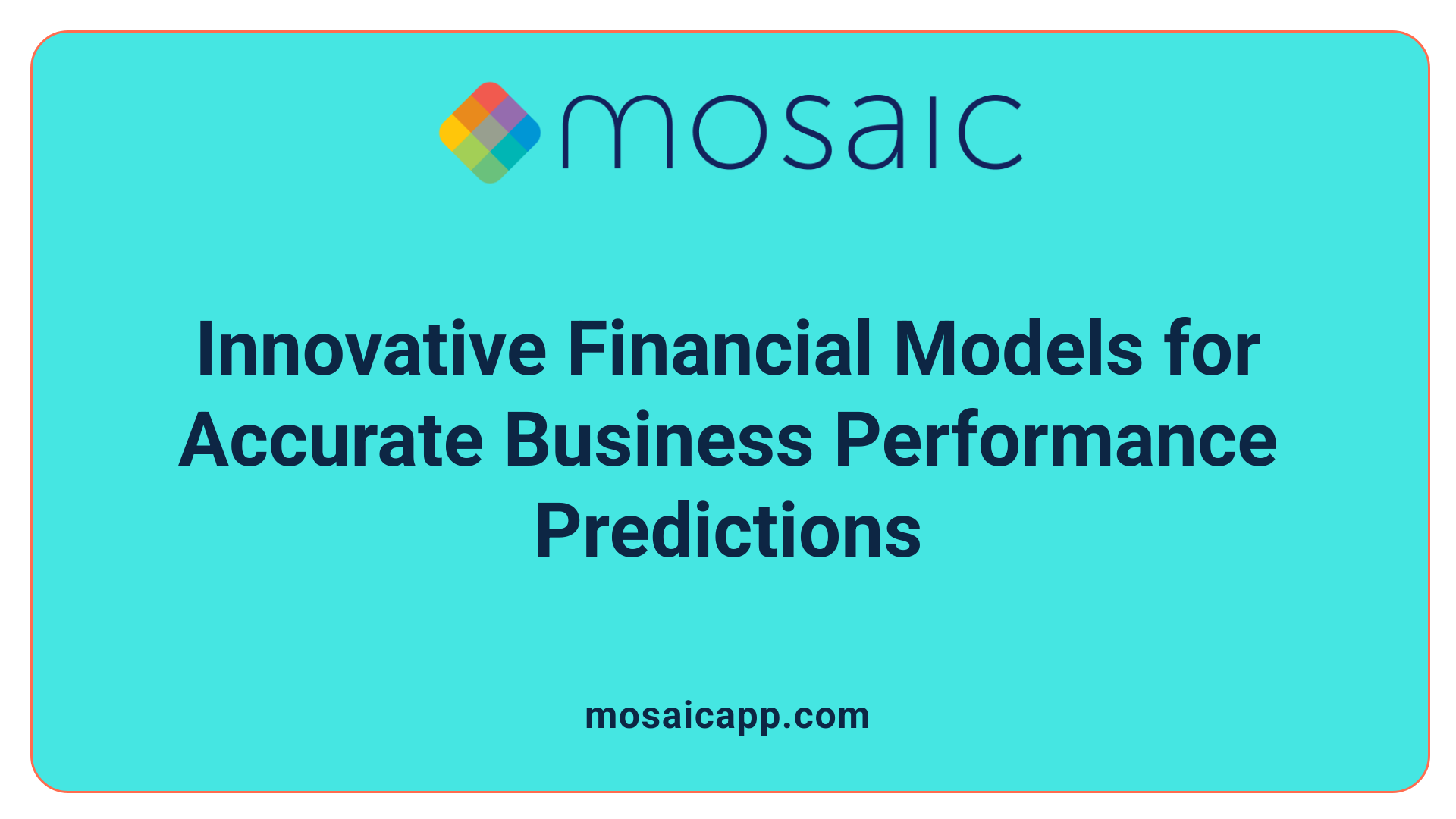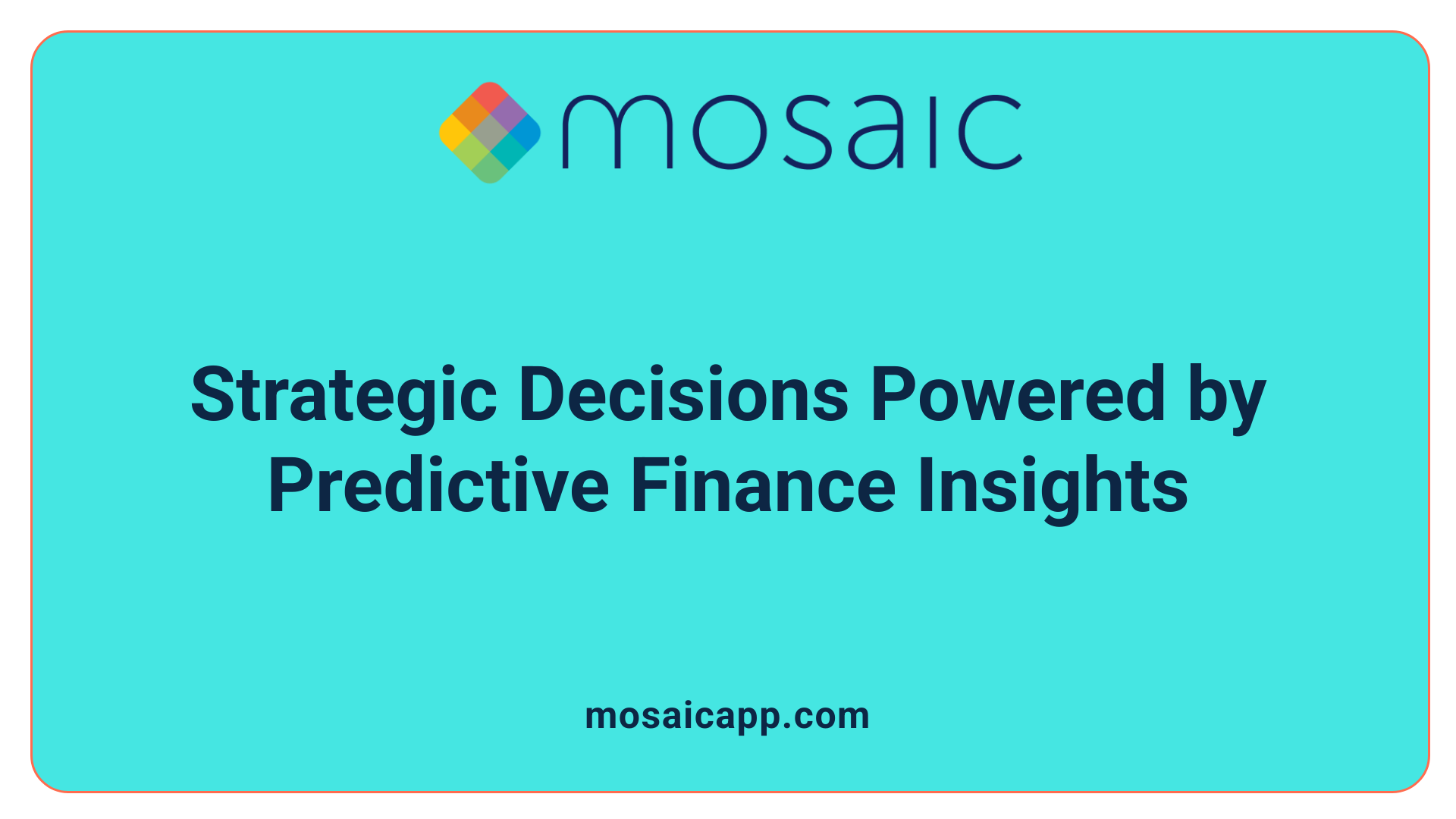Empowering Business Decisions with Predictive Finance
The landscape of professional services is rapidly evolving, driven by the transformative power of predictive finance. As organizations seek greater agility and accuracy in their financial planning, the integration of advanced data analytics, machine learning, and AI is redefining revenue forecasting, risk management, and strategic decision-making. This article explores the pivotal role of predictive finance, the models and technologies that enable it, and real-world applications demonstrating its potential to revolutionize the sector.
The Shift to Value-Driven Revenue Forecasting in Professional Services
 The professional services industry is experiencing a significant transformation as it moves toward a more value-driven approach to revenue forecasting. This evolution reflects a shift from traditional, static models to dynamic, predictive methods that leverage advanced technology and analytics.
The professional services industry is experiencing a significant transformation as it moves toward a more value-driven approach to revenue forecasting. This evolution reflects a shift from traditional, static models to dynamic, predictive methods that leverage advanced technology and analytics.
Historically, revenue forecasting relied heavily on historical data and straightforward techniques like percent of sales or linear regression. While useful, these methods often lacked the flexibility needed to adapt to the complex, rapidly changing environment of professional services.
Today, organizations are adopting innovative models that incorporate real-time data, market trends, and external drivers. This enables more accurate and timely predictions, which are vital for effective resource management and strategic planning.
Predictive finance plays a crucial role in this modern landscape. By harnessing data analytics, machine learning, and artificial intelligence (AI), firms can forecast financial outcomes with greater precision. This technology helps optimize cash flow, refine staffing, and improve project pipeline estimates.
Moreover, predictive analytics enhances risk assessment by detecting potential financial irregularities or project delays before they escalate. It provides a comprehensive view of market conditions and client behaviors, supporting proactive decision-making.
In essence, embracing a value-driven, predictive approach allows professional services firms to better align their revenue streams with actual business performance. It’s a strategic shift that not only improves forecast accuracy but also boosts agility in responding to industry changes.
Forecasting Techniques and Strategic Importance

What are the key revenue forecasting techniques and why are they strategically important?
Revenue forecasting methods combine both quantitative and qualitative approaches to predict future sales and revenue streams accurately. Quantitative techniques include time-series analysis, linear regression, moving averages, and pipeline modeling, which analyze past data and market patterns to project future results.
Complementing these are qualitative methods like expert judgment, customer surveys, and market research, which provide insights into market sentiment and upcoming trends that raw data may not fully capture.
In recent years, organizations have increasingly integrated advanced tools supported by artificial intelligence, such as machine learning algorithms and predictive analytics. These technologies analyze large datasets, including customer interactions and external market variables, to refine predictions and adapt rapidly to changing conditions.
The strategic importance of these forecasting techniques cannot be overstated. Reliable revenue predictions serve as a foundation for operational and financial planning, aiding in effective resource allocation, risk management, and setting realistic business targets.
Accurate forecasts enable companies to make informed decisions about marketing efforts, staffing levels, project prioritization, and investment strategies. This alignment ensures that organizations can respond proactively to market shifts, maintain competitiveness, and foster sustainable growth.
In summary, mastering diverse forecasting techniques and leveraging technological advancements are vital for long-term success. They provide the insights necessary for strategic decision-making, helping organizations navigate uncertainties and seize new opportunities.
Models and Methodologies for Financial Forecasting
 Financial forecasting and planning utilize a mix of models and techniques to predict future business performance. These approaches range from traditional statistical methods to cutting-edge AI-driven tools.
Financial forecasting and planning utilize a mix of models and techniques to predict future business performance. These approaches range from traditional statistical methods to cutting-edge AI-driven tools.
One common quantitative method is time series analysis, which examines data points collected over intervals to identify trends and seasonal variations. Techniques such as moving averages, exponential smoothing, and ARIMA models help generate forecasts based on historical data patterns.
Regression analysis is another widely used technique, including simple linear regression, which explores the relationship between a dependent variable and one independent variable, and multiple linear regression, which considers multiple factors simultaneously. These models help quantify the impact of various factors on revenue, costs, or other financial metrics.
In recent years, artificial intelligence (AI) integration has revolutionized financial forecasting. AI-powered tools incorporate machine learning algorithms, predictive analytics, and automation to analyze large datasets, detect complex patterns, and generate more accurate predictions. They also enable scenario analysis, allowing businesses to evaluate potential outcomes under different assumptions.
Scenario analysis involves creating multiple forecast scenarios based on varying assumptions about external and internal factors. This approach helps organizations understand risks, prepare for uncertainties, and develop resilient strategies.
Additionally, qualitative methods like the Delphi Technique and market research are employed when historical data is limited or uncertain. These methods gather insights from expert opinions and market trends to supplement quantitative forecasts.
Most organizations adopt a blended approach, combining different models and methodologies to improve accuracy. Technologies such as enterprise resource planning (ERP) systems and PSA tools facilitate data collection, validation, and seamless integration of forecast models.
Overall, the synergy of traditional statistical models and innovative AI solutions provides a comprehensive framework for effective financial forecasting and strategic planning.
Leveraging Predictive Analytics for Profit and Loss Management
How is predictive analytics applied to profit and loss management?
Predictive analytics plays an essential role in managing a company's profit and loss (P&L) by leveraging historical financial data, market trends, and customer behaviors to create accurate forecasts. This approach helps organizations better anticipate revenues, expenses, and cash flows, supporting more informed decision-making.
Using advanced machine learning algorithms and statistical models, predictive analytics identifies potential financial risks, such as cash shortages or revenue drops, and detects fraudulent activities early. It also enables companies to optimize operational efficiencies—like inventory levels and production schedules—maximizing profitability.
Real-time data monitoring allows managers to respond swiftly to market fluctuations and emerging financial challenges. This agility is vital in today’s rapidly changing economic environment. Furthermore, predictive analytics supports strategic areas like pricing strategies, targeted marketing initiatives, and scenario planning, enhancing overall financial performance.
Despite its benefits, effective deployment of predictive analytics in P&L management requires overcoming challenges such as establishing robust data governance, integrating diverse systems, and ensuring model transparency. Addressing these issues enables organizations to unlock the full potential of predictive insights, driving sustained profitability and competitive advantage.
Influence of Predictive Finance on Strategic Planning

How does predictive finance shape resource allocation?
Predictive finance enhances resource allocation by providing accurate forecasts of future revenues, expenses, and cash flows. With better predictions, organizations can allocate personnel, materials, and investments more efficiently, reducing waste and optimizing operational capacity.
In what ways does predictive finance assist risk mitigation?
Predictive analytics identify early warning signs of potential financial issues such as market volatility, declining sales, or fraud. This allows companies to implement proactive risk mitigation strategies, minimizing financial losses and safeguarding long-term growth.
How does scenario analysis benefit from predictive finance?
Predictive models support scenario analysis by simulating different market or operational conditions. Decision-makers can then evaluate potential impacts of various strategies, helping them choose options that maximize benefits and mitigate downsides.
How does predictive finance contribute to long-term sustainability?
Long-term sustainability is supported through the continuous refinement of forecasts using AI and big data tools. This dynamic approach helps organizations adapt to market changes, maintain financial health, and pursue strategic initiatives with greater confidence.
What is the overall impact of predictive finance on strategic decision-making?
Predictive finance transforms strategic planning into a more precise, data-driven process. It improves forecast accuracy, reduces uncertainties, and enables more agile responses to market shifts, ultimately fostering sustainable growth.
| Aspect | Benefits | Technologies/Methods |
|---|---|---|
| Resource Allocation | Efficient use of personnel, assets, and investments | Predictive analytics, AI, resource management software |
| Risk Mitigation | Early detection of potential disruptions or fraud | Machine learning, anomaly detection, risk models |
| Scenario Planning | Evaluation of strategic options under various conditions | Simulation models, big data analytics |
| Long-term Sustainability | Adapting to market trends for sustained growth | Continuous data refresh, predictive engines |
This modern approach driven by predictive finance makes strategic planning more responsive, informed, and conducive to long-term organizational health.
Challenges and Best Practices in Implementing Predictive Finance
Implementing predictive finance solutions offers significant benefits, including improved forecasting accuracy and enhanced risk management. However, organizations often encounter several challenges during implementation that need careful navigation.
One of the primary hurdles is data quality. Predictive models rely heavily on accurate, clean, and comprehensive data. Inconsistent or incomplete data can lead to unreliable predictions. Ensuring robust data governance and establishing standardized data collection processes are critical to overcoming this issue.
System integration presents another challenge. Many organizations operate with a patchwork of legacy systems that hinder seamless data flow. Integrating predictive analytics tools with existing enterprise platforms, such as ERP and financial management systems, requires thoughtful planning and often technical expertise. Utilizing user-friendly and compatible solutions can ease this process.
Stakeholder engagement is vital for successful deployment. Resistance from staff unfamiliar with advanced analytics can impede adoption. Including end users in the development process, providing training, and demonstrating clear value helps build buy-in and foster a data-driven culture.
Automation also plays a significant role. Automating routine tasks — like data preparation, model retraining, and report generation — reduces manual effort and accelerates insights delivery. Automation not only improves efficiency but also minimizes human error.
Best practices for overcoming these challenges involve integrating predictive analytics directly into familiar business workflows. Embedding these capabilities into existing applications ensures accessibility and ease of use, encouraging wider adoption.
Furthermore, leveraging advanced tools that simplify data management and analysis supports scalability. Active stakeholder communication, combined with strong data governance policies, ensures ongoing alignment with organizational goals.
Real-world case studies illustrate these principles effectively. For example, some firms have successfully enhanced forecasting accuracy by automating data workflows and embedding predictive insights into their operational platforms. These strategies lead to better strategic decisions, proactive risk mitigation, and more agile responses to market changes.
In summary, addressing challenges such as data quality, system integration, stakeholder engagement, and automation with best practices can significantly improve the effectiveness of predictive finance solutions and deliver measurable business value.
Case Studies Demonstrating Predictive Finance Impact
How are predictive finance applications transforming professional services?
In recent years, several leading organizations have effectively integrated predictive analytics and AI-driven models to significantly enhance their financial operations and strategic planning. These real-world examples underscore the tangible benefits of leveraging advanced data techniques.
JPMorgan Chase stands out as a prime example. The bank employs sophisticated AI-driven analytics to optimize investment strategies, improve client services, and streamline operations. By analyzing vast amounts of data—over 70,000 data points monthly—they achieve approximately 95% accuracy in their forecasts. This advanced approach has reportedly resulted in over $1.5 billion in savings and a notable 20% increase in revenue, showcasing how predictive models can deliver substantial financial gains.
Capital One utilizes real-time customer behavior analysis through machine learning algorithms. This enables the bank to provide more relevant product recommendations, proactively address customer needs, and reduce issue resolution times by half. The use of predictive analytics in credit scoring and fraud detection has resulted in a more efficient customer experience and lowered operational costs.
Similarly, Santander has adopted the FICO Platform to enhance credit risk assessment accuracy. The platform facilitates faster credit evaluations by integrating predictive models that analyze borrower data more comprehensively. This improvement allows the bank to make more informed lending decisions, reduce default risks, and accelerate credit approvals, thereby boosting profitability and customer satisfaction.
These organizations employ various analytic techniques, including time series analysis, classification, and anomaly detection. For example, predictive models forecast receivables and cash flows, evaluate customer creditworthiness, and identify potential default risks. Such applications help reduce financial risks, optimize cash management, and inform strategic planning.
ROI examples and operational advantages
The deployment of predictive analytics yields impressive ROI figures. JPMorgan Chase's predictive models, for instance, not only reduced costs but also expanded revenue streams. Capital One reports improvements in customer engagement and operational efficiency, directly impacting profitability. Santander’s enhanced credit evaluation processes allow for more accurate risk pricing and faster decision-making, leading to decreased loan default rates.
Overall, these case studies demonstrate how advanced predictive analytics tools generate measurable benefits, including increased operational efficiency, better risk mitigation, and strategic advantages. They serve as a testament to how data-driven decision-making is becoming indispensable in the professional services sector, ultimately fostering a more agile and resilient financial landscape.
The Future of Predictive Finance in Professional Services
As the professional services sector continues to embrace data-driven strategies, predictive finance will become an indispensable component for staying competitive. The ongoing development of sophisticated models, integration of AI and automation, and growing availability of real-time data sources will enable firms to achieve unprecedented levels of accuracy and agility. Organizations that proactively adopt these technologies can expect to see improved profitability, risk mitigation, and strategic insight. Embracing predictive finance today sets the stage for sustainable growth and long-term success in an increasingly dynamic market environment.
References
- The Complete Guide to Professional Services Revenue ...
- Predictive Analytics in Finance
- Predictive Analytics
- Predictive Analytics in Finance: What is it and How is it Used?
- Predictive Analytics in Corporate Finance (7 Use Cases)
- 7 Financial Forecasting Methods to Predict Business ...
- Predictive Analytics in Finance and Driving Smarter Decision


